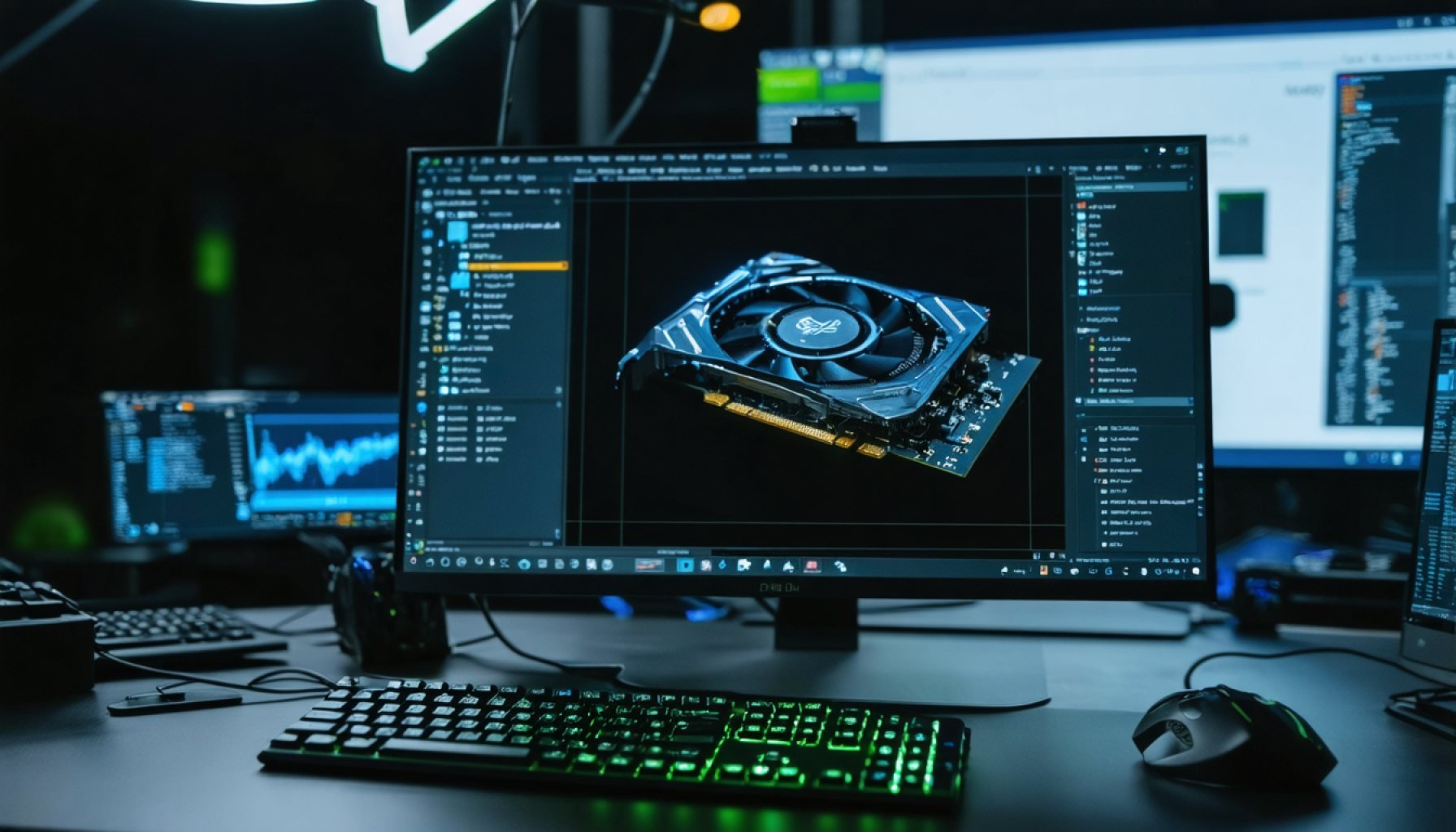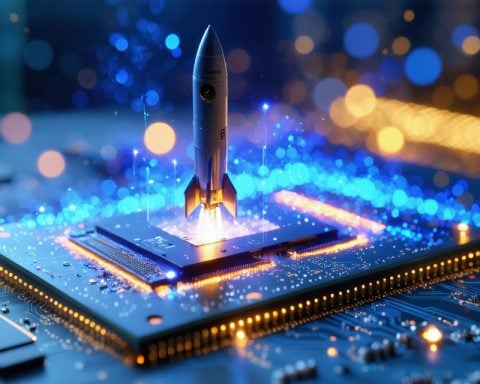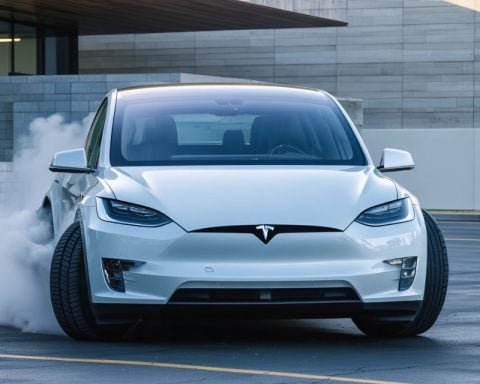- Nvidia’s upcoming quarterly earnings report is highly anticipated, acting as a critical indicator for the evolving AI industry.
- Key challenges include tightening export restrictions and competition from China’s growing AI sector.
- Market analysts predict a potential $230 billion valuation shift following Nvidia’s financial disclosures.
- The company’s momentum has slowed, but there is cautious optimism regarding its future innovations in robotics and quantum computing.
- New products, such as the GB300 and Rubin, may bolster Nvidia’s position and address skepticism at the GTC conference.
- Investors are encouraged to explore opportunities in software and cybersecurity as AI evolves.
- Nvidia’s future hinges on whether it can navigate these challenges and reclaim its leadership position in the market.
As Nvidia edges closer to its quarterly earnings report, the tech realm buzzes with anticipation akin to an electric storm. Investors hold their breath, eyes fixed on what many consider the litmus test for the evolving AI industry. The chip giant, once a paragon of growth, now finds itself navigating rough seas, beset by challenges including tightening export restrictions and a looming threat from China’s burgeoning AI landscape.
Analysts predict that Nvidia’s financial revelations will shake the markets, forecasting a potential $230 billion shift in value. This figure might seem daunting, yet it’s just the tip of an iceberg when deciphering the company’s future bearings. Echoes from recent quarters hint at a persistent volatility that could redefine investor strategies in the coming months, shifting the tide in favor of cautious optimism.
Despite its slowed momentum this year, a flicker of hope persists. Analysts maintain faith in Nvidia’s long-term trajectory, forecasting revolutionary breakthroughs in robotics and quantum computing. As the company unlocks new avenues with groundbreaking products like the GB300 and Rubin, it may well silence the skeptics at the approaching GTC conference.
Savvy investors, however, are advised to look beyond the turbulence. With AI’s next phase unfolding, avenues like software and cybersecurity emerge as promising territories. These sectors promise ripe opportunities amidst the storm, paving the way for strategic reallocations. Though Nvidia’s path seems precarious now, its blueprint for innovation hints at brighter horizons.
As Nvidia stands on this precipice, the question hangs in the air: Will it reclaim its crown as the S&P 500’s vanguard, or do choppy waters still lie ahead?
The Surprising Factors That Could Make or Break Nvidia’s Future in AI
How-To Steps & Life Hacks
1. Stay Informed: Regularly follow Nvidia’s financial reports and industry news to understand market trends. Websites like Bloomberg and Reuters provide up-to-date financial insights.
2. Diversify Investments: While Nvidia is a strong player, consider diversifying into emerging sectors like software and cybersecurity to balance your portfolio.
3. Watch Competitors: Keep an eye on Nvidia’s competitors, such as AMD and Intel, to predict industry shifts.
4. Engage with Emerging Markets: Explore opportunities in burgeoning AI markets like China, but remain cautious of regulatory changes.
Real-World Use Cases
– Gaming: Nvidia’s GPUs remain dominant in gaming, powering high-end graphics and VR experiences.
– Data Centers: Nvidia’s chips are widely used in data centers, providing high-performance computing for cloud services.
– Autonomous Vehicles: Nvidia’s DRIVE platform is paving the way for AI-driven cars.
Market Forecasts & Industry Trends
The GPU market, fueled by AI and machine learning applications, is expected to reach $200 billion by 2025, according to Gartner. Nvidia is projected to maintain its leadership due to its robust R&D and strategic partnerships.
Reviews & Comparisons
Nvidia’s GPUs are generally considered superior in performance compared to those from AMD and Intel, especially for AI tasks. The GB300 series has garnered positive reviews for its efficiency and speed in complex computations.
Controversies & Limitations
– Export Restrictions: Nvidia faces regulatory challenges affecting its ability to sell to certain markets, particularly in China.
– Competition: Increasing competition from other AI-focused companies in China could threaten Nvidia’s market share.
Features, Specs & Pricing
– GB300 Series: Boasts cutting-edge features like improved energy efficiency and AI acceleration capabilities, priced between $1,000 to $1,500 depending on the model.
Security & Sustainability
Nvidia has committed to reducing its carbon footprint, aligning with global sustainability efforts. However, the energy consumption of high-end GPUs remains a concern.
Insights & Predictions
Analysts predict that Nvidia’s focus on AI-enabled solutions, like quantum computing and robotics, will drive long-term growth despite short-term market fluctuations.
Pros & Cons Overview
Pros:
– Leading-edge technology
– Strong brand recognition
– Innovation in AI and quantum computing
Cons:
– High dependency on global market trends
– Vulnerability to export restrictions
Actionable Recommendations
– Investment Strategy: Balance your portfolio by investing in Nvidia’s new ventures while keeping an eye on emerging sectors like cybersecurity, which could offer robust returns.
– Monitor Competitors: Stay aware of Nvidia’s competitors in AI to potentially leverage opportunities as the market evolves.
– Sustainability Focus: If sustainability is a priority, engage with companies that address the environmental impact of tech solutions.
For further insights into the tech and financial industries, visit Bloomberg and Reuters.



















